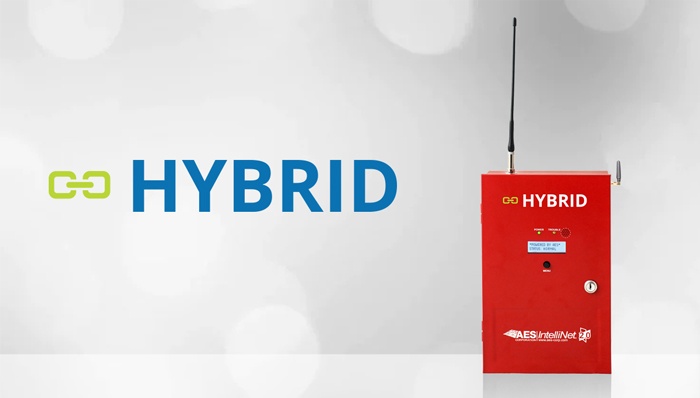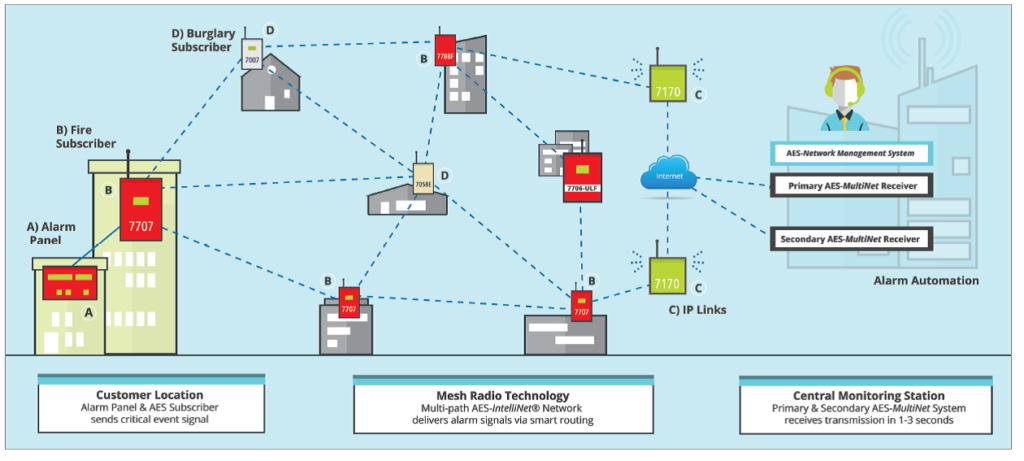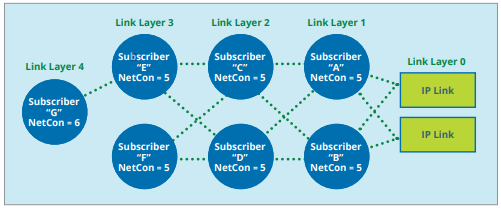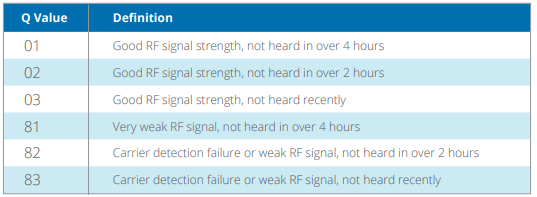
A question frequently asked about the AES 7177 Hybrid 2.0 Fire Subscriber is, where in the network can the Hybrid unit be placed?

The Importance of the Routing Table
As long as another IP Link or Hybrid make it onto the Hybrid’s routing table, the unit will be satisfied. However, if there are no IP Links or Hybrids listed in the routing table then the unit will produce a Redundant Mesh (RM) Fault meaning it does not have peer in its routing table at a similar or lower Link Layer than that of the unit itself (Link Layer 0). The unit does this to always ensure it can serve as a RF repeating peer to other dependent Subscribers.
Hybrid Design and Functionality
The 7177 Hybrid is designed in such a way as to protect the resiliency of the RF mesh network. Since the Hybrid is intended to function both as an IP Link and as a repeating peer Subscriber, it is important for the unit to monitor and report on the integrity of it’s RF mesh connectivity to ensure proper repeating which is based on AES mesh routing algorithms.
A bit about RF mesh routing; routing tables for RF communications are based on several factors, primarily Link Layer and Signal Quality.
Link Layer
The Link Layer defines the number of communication hops a Subscriber unit will take to reach an IP Link. A Link Layer of 2 indicates that there is one Subscriber unit between the reporting Subscriber unit and the IP Link. IP Links and the Hybrid are always assigned a Link Layer of 0, as they are the last hop in the RF transmission path. Subscribers will only add peers to their Routing Table if the peer is of the same Link Layer or lower than the unit itself. The figure below depicts the Link Layer relationship:

Signal Quality
Signal Quality (Q Value) is a measure of the RF signal. This measurement is used to evaluate the viability of communications between Subscriber units. The table below defines the Signal Quality values:

Q values of 81, 82, & 83 are considered to be Marginal. This indicates that the communication to that unit has the potential to be compromised. This could be due to a variety of conditions, therefore units reporting a Q value in these ranges will be de-prioritized in the routing table. This is accomplished by artificially increasing the Link Layer by 1 in increments. For example, a unit that is in reality 1 hop away from an IP Link or Hybrid will report as a Link Layer 1 when the Q value is 01, 02, or 03. However, that same Subscriber when reporting a Marginal Q value will then report as a Link Layer 2.
Peers
The example below highlights this concept. In the image, you will see the Peers (routing table) for a Hybrid. Peers 1 to 7 are regular Subscribers, while ID FFFE is an IP Link. Note that the LL (Link Layer) is a 1 for FFFE. In actuality, because this is an IP Link, it is a Link Layer 0 but because the Q value is Marginal the Link Layer is increased by 1 increment.

If the Hybrid unit you install can ‘hear’ another IP Link or another Hybrid, it will place it in its Routing Table and assign it a Peer # based on the Q value. If the Signal Quality is Good, then it will be at the top of the list. If the Signal Quality is Marginal, then it will be placed further down the list of Peers. Where exactly in the list it will fall will be determined by the Link Layer and Signal Quality of the other Peers the unit can hear. IF the unit hears an IP Link and a Hybrid and provided both have a Good Signal Quality, then the IP Link will be placed first in the Routing Table sequence.
Have questions or need technical assistance with your install?
Our team is here for your team! Start a live chat session with one of our alarm industry experts.
Ask us about our professional services for help with network planning, site certification, review and guidance related to network management issues, central station moves and more!

